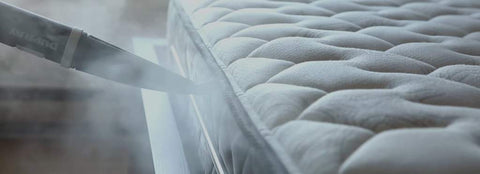In the last decade, bed bugs have undergone a serious resurgence. The insects are becoming a common pest in much of North America and around the globe. Unfortunately, they are difficult to eradicate and often require a skilled pest control professional but there are a variety of treatment options available:
Insecticide Treatments
Insecticides were once the go-to method to eliminate bed bugs. A licensed Pest Management Professional (PMP) has a variety of insecticide options to treat bed bugs.
One of the main drawbacks to insecticides is that the bugs will rarely all be eradicated. At least two or three follow up treatments are usually required to eliminate the bugs. Most insecticide treatments take 30 minutes to two hours depending on the size of the room and you will not be allowed to enter the space until all the chemicals have dried.
Any time that a PMP uses an insecticide they should give you a detailed list with instructions, so you know to prepare your home prior to treatments. Pre-home preparation is imperative to ensure treatment success.
Unfortunately, bed bugs have become immune to many popular insecticides and many others such as DDT have been banned due to their potential risk to human health and the eco-system. Luckily, there are numerous biopesticides emerging on the market as well as DIY treatment options that are natural and non-toxic.
Steam Treatment

If caught early, bed bugs can be controlled using a steam cleaner. This method can confuse some people as you typically need a commercial steamer, not one intended for cleaning clothes or carpets since these will not reach high enough temperatures. The correct steamer will hold a surface temperature of 160 to 180 degrees F. Pest control companies often offer steam cleaning services to control bugs or you may be able to rent a steamer. The steamers work by delivering high temperatures to surfaces and crevices where bed bugs may be hiding but often requires additional treatment to completely eradicate the pests.
Heat Treatments
Heat treatments have become a common way to treat bed bugs. Professional pest control companies use specialized equipment to heat the infected area to a high enough temperature to kill the bed bugs, usually 135 to 145 degrees Fahrenheit. The temperature is carefully controlled to avoid damaging furnishings but still maintain a lethal level to combat the bugs. Typically, heat treatments take six to eight hours to complete.
With heat treatments, advance preparation is required. The homeowner must remove heat sensitive items from the home prior including things like aquariums, potted plants, medications, candles, pets, and aerosol cans.
Heat treatments effectively eliminate bed bug infestations within one day and rarely need to be repeated. Another benefit is that they leave behind no harmful residue, unlike many conventional chemical insecticides. However, some pest control companies do advise having the home treated with insecticides after heat treatments to avoid reintroducing the pests to the home. Only a professional and skilled pest management company should be used for heat eradication.
Freeze Treatment

Bed bugs do not like cold temperatures. Although they can remain active at temperatures as low as 46 degrees Fahrenheit and survive at even lower temperatures, they will die when exposed to 0 degrees Fahrenheit or colder for several days. However, this is exceedingly difficult to do unless you live in a place that is extremely cold during the winter months. Professional pest management companies often use specialized freezing methods and equipment to kill the pests. Carbon dioxide is utilized to create very tiny particles referred to as CO2 snow which are poisonous to the insects. The CO2 snow leaves behind no residue and does not damage clothing or bedding.
Bed Bug Traps
Bed bug traps, often referred to as interceptor cups, are placed between where bed bugs hide during the day and their food source. Usually the traps are placed under bedposts or the legs of furniture. The trap is made up of one part that has a rough surface and a second part that is smooth. The premise behind the trap is that bed bugs can travel across rough or textured surfaces but are unable to scale smooth surfaces and therefore become trapped. Although the traps will not eliminate an infestation, they are a terrific way to monitor furniture or other areas that you suspect might be infested with the insects.
Choosing the right treatment option is a matter of personal preference. If you’re unsure of the right option for you, keep doing your research – you’re already off to a good start!
Get more information on Bed Bugs:
